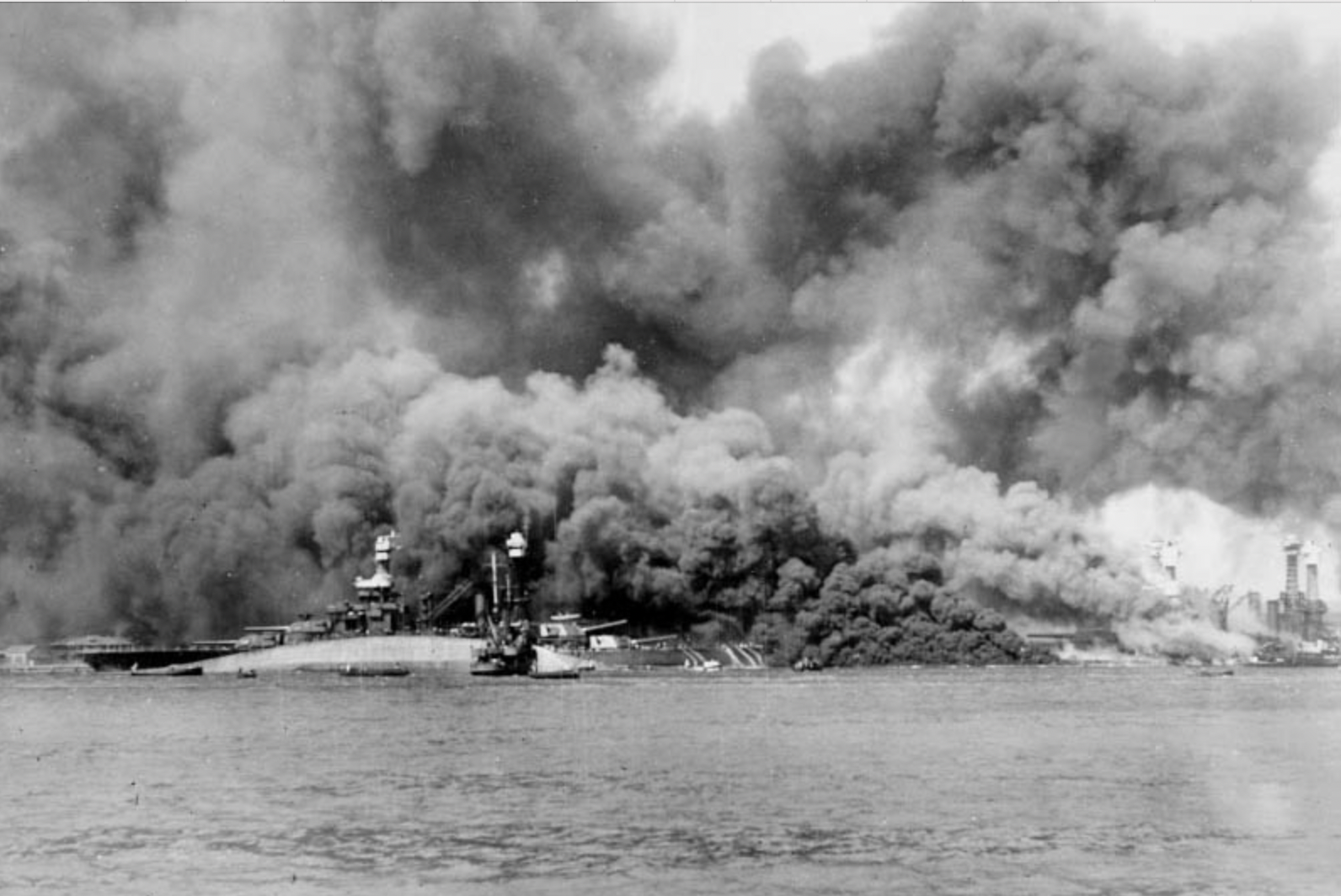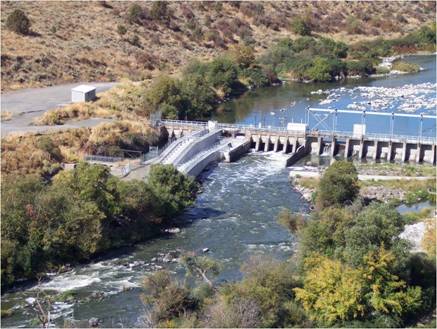
The battleship USS Nevada is on fire during the attack on Pearl Harbor, Hawaii, Dec. 7, 1941. (Photo: U.S. Navy, defense.gov)
They Did Their Jobs at Pearl Harbor, and We Are All the Better For It
The attack on Pearl Harbor lasted a total of one hour, 15 minutes, in which 2,403 Americans met with watery graves
By Kevin Nelson, December 7, 2022 2:00 am
The war that changed everything began at 7:55 a.m. on December 7, 1941, when a Japanese strike force launched a devastating surprise attack on the sleeping men and ships of the U.S. Pacific Fleet at Pearl Harbor, Hawaii.
Now that day is known as Pearl Harbor Day, which, sadly, has less and less meaning for many Americans. Just another day on the calendar.
But suppose you stepped into a time machine and transported yourself back to the day after the Japanese struck, when like every other American you had the household radio turned on and were listening in mournful silence to President Franklin Roosevelt speak to the nation. “Yesterday, December 7, 1941,” he said in his immortal phrasing, is “a date which will live in infamy,” and with it the country was suddenly plunged into world war.
For a later generation of Americans, the only date that might compare to Pearl Harbor is 9/11, another shocking event of global consequence in which thousands died and after which the U.S. became immersed in a different sort of war, the war on terror.
Every state and territory in the Union lost loved ones at Pearl Harbor, including California. One of them was Bill Allen, a Navy electrician’s mate who lived in Long Beach with his wife Margaret. Like so many other Californians, then and now, Allen was from somewhere else originally—in his case, Kansas City. He and Margaret were married in St. Anthony’s Church in Long Beach, which was the home port of the ship he served on, the USS Arizona.
The attack on Pearl Harbor lasted a total of one hour, 15 minutes. In that short span of time 2,403 Americans met with watery graves; nearly half of them were serving on the Arizona.
The day after their son died Bill’s parents withdrew every penny of their savings and invested it into war bonds that would be used to finance the fight against the Japanese and other enemies of America. “If it will help shorten the war so other mothers wouldn’t have to go through what I’ve been through, that’s all I want,” explained his mother.
More than 350 Japanese aircraft, 35 submarines and a phalanx of ships destroyed or damaged the USS Arizona, seven other Navy battleships and 11 other ships. Eight torpedoes struck the USS Oklahoma in the the first eight minutes of battle, and a ninth hit it after it had sunk into the mud.
Four hundred twenty-nine crew members went down with their ship, including some from California: Ken Armstrong, Gerald Bailey, James Buchanan, to name but three.
The flagship of the American Battle Force was the USS California, which was likewise ripped apart by torpedoes and bombs. The blasts killed one hundred men and the sinking ship, belching smoke and flames, took on so much water it had to be abandoned. Although later on, thanks in part to the bonds purchased by Bill Allen’s parents and millions more, it was raised from the mud, repaired, and returned to active duty.
Fifteen men on Pearl Harbor won Medals of Honor, the military’s highest award for bravery under fire. Three were sailors on the USS California and another was an officer, Herb Jones, of Coronado, California.
Jones had enlisted in the U.S. Naval Reserve as a teenager and had six years under his belt when he arrived in Honolulu in early 1941 to begin his service there. His fiancé Joanne joined him later and they were married in June. When all hell broke loose on December 7, Ensign Jones was on board the California and he and his men were fighting back.
After rescuing a man trapped in a smoke-engulfed compartment, Jones formed an anti-aircraft battery to fire back at incoming Japanese planes. He also helped supply ammunition for it while taking on fire himself. Mortally wounded by a bomb blast, Jones refused to leave his post despite efforts by two sailors to save him. His last words were: “Leave me alone! I am done for. Get out of here before the magazines go off.”
The oldest surviving Pearl Harbor veteran was Ray Chavez of San Diego. A Navy man, he served on the minesweeper Condor that spotted a Japanese submarine as it was seeking to enter Pearl Harbor that morning. He died in 2018 at the age of 106, and two years ago they named a post office in Poway after him.
At that time his daughter, Kathleen Chavez, also a Navy veteran, said of her father, “He’s probably looking down from Heaven right now thinking, ‘Gosh, I don’t know why they’re making such a big deal. I was just doing my job.’”
Ray Chavez and every other Pearl Harbor vet—the ones who survived and the ones who did not—they all did their jobs, and we are the better for it. A moment of thanks or a prayer in their memory might not be such a bad thing.

- The Big Green of Money Against the Farmers and Ranchers of Solano - May 31, 2024
- Flag-Waving Tribute to the Men Who Fought on D-Day - May 29, 2024
- Charles Swanston’s Headless Rancher Statue is a Casualty of War - January 4, 2023








Thanks, Kevin. It’s always wonderful to know about our California heroes.
Thank you Kevin. I just put my American Flag out in the front just like I do every December 7th. I remember my parents telling me what it was like on that day. They told me about the next day when men of all ages were standing in lines at Military Induction Centers to enlist. It seems sadly that people have forgotten what happened on that day.
Thank you for this article. Every history teacher in CA and this country should be teaching about Pearl Harbor today but sadly they probably are not….. I doubt the US could win another war today. The generation that would fight it would be looking for an app!
Thank you, Mr. Nelson, for helping to keep this part of our history alive.
Thank you for this important remembrance of the valor and sacrifices of that generation…
My Dad graduated high school in 1943, and was shipped off to officer’s training school due to his intelligence testing scores, but was pulled out and sent to the Huertgen Forest as a reserve in the second half of The Battle of The Bulge, and fought his way through the Roer River Valley into Berlin, where a column of German tanks & support vehicles and troops surrendered to him while he was on traffic duty…as a PFC….
He passed away 19 years ago and I miss him daily… he was my hero….